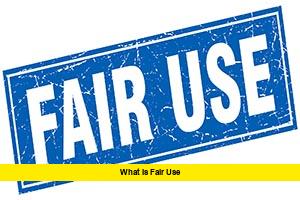What is fair use taking center stage in courtrooms nationwide as artificial intelligence companies face unprecedented copyright challenges. The first half of 2025 saw major developments in some of the dozens of ongoing copyright lawsuits against AI companies, with two cases in particular, Bartz v. Anthropic and Kadrey v. Meta, seeing orders on summary judgment that sent shockwaves through the copyright community when courts found that certain types of generative AI training qualified as fair use.
This legal doctrine, which permits limited use of copyrighted material without permission, has become the battleground for defining how artificial intelligence can legally access and process creative content. Recent court decisions have created a complex landscape where some AI training methods receive protection while others face rejection.
Table of Contents
Landmark Court Rulings Challenge Fair Use Boundaries
In the closely watched Thomson Reuters v. ROSS Intelligence case, a federal judge ruled that an AI developer’s use of copyrighted material was not fair use as a matter of law. This February 2025 decision marked a significant victory for copyright holders and established important precedents for AI training practices.
A Delaware federal judge granted summary judgment to Thomson Reuters, ruling that the use of Westlaw Headnotes to train a competing legal research AI tool is not fair use. The ruling emphasized that commercial competition and substantial copying weigh heavily against fair use protection.
However, not all courts have reached the same conclusion. In a separate case, a judge ruled that Anthropic’s digitization of books purchased in print form could be considered fair use, “because all Anthropic did was replace the print copies it had purchased for its central library with more convenient space-saving and searchable digital copies.”
Key Points Summary
📌 Quick Takeaways for Busy Readers:
- Fair use doctrine faces major testing in AI copyright lawsuits throughout 2025
- Courts split on whether AI training qualifies for fair use protection
- Commercial competition significantly impacts fair use analysis
- Print-to-digital conversions receive more favorable treatment
- Legal landscape remains highly fact-specific and rapidly evolving
AI Training Data Under Legal Microscope
The question of what is fair use has become particularly complex when applied to artificial intelligence training methods. Companies are advised to avoid or limit unauthorized use of copyrighted content in AI training and ensure lawful acquisition when copying is necessary, as fair use analysis is highly fact-specific and AI contours are rapidly shifting.
The total number of copyright lawsuits against AI companies has reached 39 lawsuits, demonstrating the widespread nature of these legal challenges. Each case presents unique circumstances that courts must evaluate under traditional fair use factors.
The four-factor test for fair use considers the purpose of use, nature of copyrighted work, amount used, and effect on market value. AI cases have complicated this analysis because automated systems can process vast amounts of content instantaneously.
Policy Changes on the Horizon
Potential policy shifts under current administration include dismantling AI-related bills that currently include licensing measures protecting copyrighted content used in data training. These changes could dramatically alter how companies approach fair use compliance.
Legal experts recommend that businesses developing AI tools exercise extreme caution around copyrighted material usage. The rapidly evolving legal landscape means that practices considered acceptable today might face challenges tomorrow.
The Copyright Office has also issued guidance on AI-assisted works, providing clearer frameworks for applying copyright law to artificial intelligence applications. This guidance helps creators understand when human involvement is sufficient to maintain copyright protection.
Read Also-What Is Copyright — and Why It Matters in 2025
Future Implications for Content Creators
These developments have profound implications for content creators, technology companies, and legal practitioners alike. The fair use doctrine must adapt to handle unprecedented technological capabilities while protecting creators’ rights.
Courts continue grappling with balancing innovation against intellectual property protection. Each new ruling adds to the complex mosaic of precedents that will shape how artificial intelligence and copyright law intersect.
The legal community watches closely as appellate courts will likely provide more definitive guidance on these crucial fair use questions. Until then, uncertainty remains the dominant characteristic of this evolving legal landscape.
Stay tuned as these landmark cases continue developing and reshaping how we understand copyright protection in the digital age.
FAQ Section
Q: What exactly is fair use in copyright law? A: Fair use is a legal doctrine that allows limited use of copyrighted material without permission under specific circumstances, such as criticism, comment, parody, news reporting, teaching, or research.
Q: How do courts decide if AI training qualifies for fair use? A: Courts examine the traditional four-factor test: purpose of use, nature of copyrighted work, amount used, and effect on the market value of the original work, though AI applications complicate this analysis.
Q: Are all AI companies at risk of copyright lawsuits? A: Companies using copyrighted material for AI training face potential legal challenges, especially when commercial competition is involved or when substantial copying occurs without clear transformative purpose.
